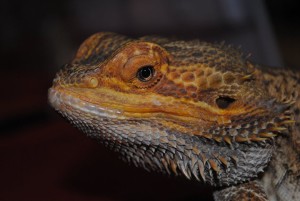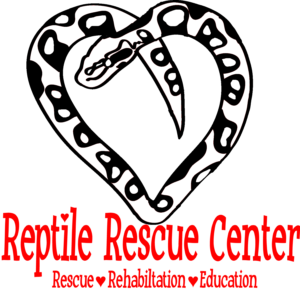
Enclosure:
– Minimum size of enclosure should be 40 gallon breeder or equivalent (36” x 18” footprint) for smaller Beardies; larger Beardies may require a 75 gallon+ enclosure.
– Enclosure should be constructed with solid walls (no screen cages), have adequate top or side ventilation, and have three sides darkened or covered.
– Enclosure should be secure with either latching doors or a screen held on with clips/locking mechanism.
Temperature/Lighting:
– Primary basking heat should be provided from an overhead heat bulb. A daytime bulb should be used during the day to provide heat and light. Supplemental heat at night may be required from a non-light emitting bulb.
– Artificial UV light should be provided from a UV fluorescent strip light.
– A day-night light cycle should be provided. Daytime bulbs (both heat and UV) should be on for approximately 12-14 hours during the day and off for approximately 10-12 hours at night.
– Temperature should be monitored with a reliable digital thermometer or heat gun.
Substrate:
– Solid substrate that is safe and easy to clean must be used.
– Particle substrates such as sand, dirt, or wood chips are not to be used.
– Recommended substrates include tile, reptile carpet, or newspaper.
Enrichment Items:
– Decorative items such as basking surfaces, hiding places, fake plants, climbing branches/rocks, hammocks, etc. are recommended.
Food:
– Bearded Dragons are omnivores and should be offered both plant material and animal material.
– All food items offered should be an appropriate size – no larger than the space between the Beardie’s eyes.
– Plant material should be provided as fresh greens, vegetables, and fruits.
– Animal protein may be provided in the form of live insects such as cockroaches, crickets, superworms, butterworms, silkworms, or hornworms. Feeder insects should not be wild-caught.
– Calcium (with D3) and vitamin supplements should be used regularly.
– Commercial pelleted or canned “complete” diets may not be used as a primary diet staple.
 Follow
Follow


